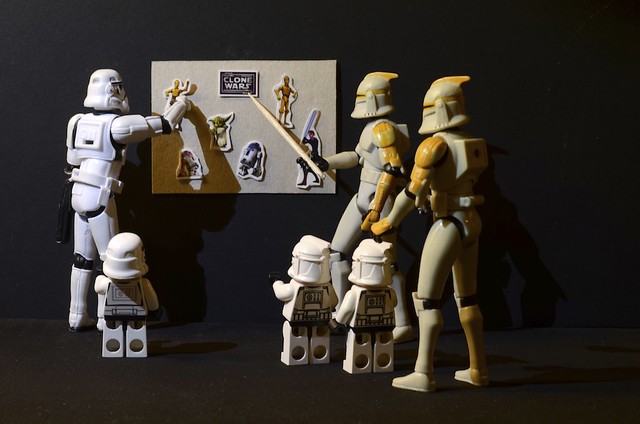It seems the voices, both for and against the Common Core State Standards got louder over the past year. Wherever you come down on the debate I hope we can all agree that, in most cases, summative assessments have their place. But in day-to-day learning in the classroom formative assessments give us a truer picture of how are kids are learning and how our teaching needs to adapt. In Formative Assessments Are Easier Than You Think, we took a look at a few, simple techniques and tools you could use each day to gauge how your students were learning and gain valuable insight into their learning. And in Why Formative Assessments Matter we look at a story of how formative assessments changed one classroom for the better.
The gathering of information is just one part of the digital literacy puzzle. Understanding how to organize, or curate that information is, I would argue, much more of an important skill. In the past, the only way we could keep our bookmarks and resources was in our browser. Now we can take that information anywhere, to any device, and share it with anyone with social bookmarking and social curation tools. In the post Doing More With Diigo we took a look at what the service is and how teachers and students could use it to collect, curate and share information.
Blogging is a large part of my professional and personal reflection process. I use my blog to share, think and learn in a public way. Blogging is also becoming a larger part of student's learning. But how do you get started? What services can you use? How can blogs be used in the classroom? Are their prompts you can use? How about grading them? In the post So...You Wanna Use Blogs In The Classroom, we looked at the answers to all those questions and more.
Collecting and curating information is just part of the digital literacy package. If you don't have the skills necessary to keep safe online, you could end up making a lifelong mistake. (Just ask Justine Sacco.) We all need to understand how be smart and how to protect our information and our identities while living online. In So...You Wanna Be A Good Digital Citizen we took a look at resources kids and teachers can use to be better digital users.
In my position of technology leadership I spend a lot of time talking to school and district leaders about technology integration and how technology can be better utilized for learning. I use a lot of resources to prompt conversations and get our administrators thinking. In the post 5 Leadership Questions To Finish (And Start) The School Year With I look at one of my favorite technology leadership assessments and pull out the 5 questions we all need to ask to help drive our reflections and our technology decisions each year.
An interesting collection of posts indeed.
While not as popular in terms of views, I did have some posts that were fun to write. A few of my favorites from the past year included:
Going Global-Tips and Resources for Global Collaborations
The Administrator PR Machine
The Summer Series of Learning (10 Posts To Learn Something Over The Summer, or Anytime!)
So...You Are Connected. Now What?
This year proved to be my lightest for blog posts. After 5 years, however, I still find this space valuable for my professional and personal growth as an educator and learner. I am so glad you are reading and hope you will join me in 2014 for even more reflections, sharing, learning and growing!
Happy New Year!















